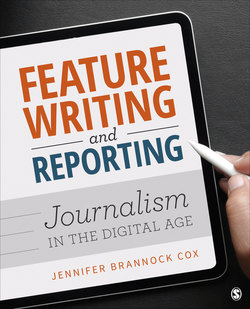Читать книгу Feature Writing and Reporting - Jennifer Brannock Cox - Страница 61
На сайте Литреса книга снята с продажи.
Chapter 5: To be Continued
ОглавлениеThe most important piece of any historical feature is tying the past to the present and future. This is largely what separates many of these stories from encyclopedia entries. Where do the people who are impacted go from here? How will the past continue to influence us today? Chapter 5 reminds readers that this story is far from over.
UNC’s statue saga isn’t over.
As the bronze soldier lies in storage somewhere, counter protests are planned. UNC President Margaret Spellings and UNC Board of Governors Chairman Harry Smith called the protest “unacceptable, dangerous and incomprehensible,” and said “mob rule” won’t be tolerated.
They promised a full investigation and onFriday, police took out three arrest warrants against protesters.
But so far, UNC officials are quiet on the question of what happens next with Silent Sam. One Board of Governors member said the statue would be reinstalled within 90 days.
Readers are reminded that this story still has a lot of unanswered questions. The subsequent sources echo the chaos. They have strong opinions, but it is clear they are still trying to process what has happened and what the future holds.
Barbara Rimer, the dean of UNC’s Gillings School of Global Public Health, sent a letter to the Gillings school Tuesday. In it, she suggested a monument to a person who promoted peace, equity or prevention, instead of a return to Silent Sam, who, she said, “spoke loudly.”
“It’s no wonder that, as other states sought to move beyond the past by removing statues, our inability to do so caused wounds to fester until the pain became unbearable,” Rimer said. “It is not surprising that it happened Monday night. It is only surprising that it did not happen sooner. One hundred and five years of simmering were bound to lead to a boil.”
McInerney, the UNC alumnus, poet and a Cambridge University graduate student, said he found Monday’s outcome completely comprehensible.
“As the first public university, one embedded in the American South, this is not a thing that’s going away,” he said.
“The conversation is heating up, and we need to lean in to that conversation and continue to do this hard work around understanding our past.”
When reporting these types of historical features, reporters need to answer the following questions:
How did this item/place/group come to exist?
Why was it needed at the time?
How has it or the need for it changed over the years?
How do people feel about it now?
What is its future?
Historical features can also be related to a specific time peg. Reporters often do stories to mark significant anniversaries and events, usually at 5- or 10-year intervals. However, some events are significant enough to merit stories every year. For instance, publications throughout the U.S. publish historical features every Sept. 11 in memory of those killed in the deadly terrorism attacks in 2001.
Not all historical features are based on tragedies. Think about influential organizations, buildings, people or events in your community. How long have they been around, and how long has it been since someone really looked into their formation and purpose?
Time pegs tied to holidays and awareness months are also good fodder for historical features. Think about a yearlong calendar. What time pegs exist, and what kinds of stories could you come up with for each month?
